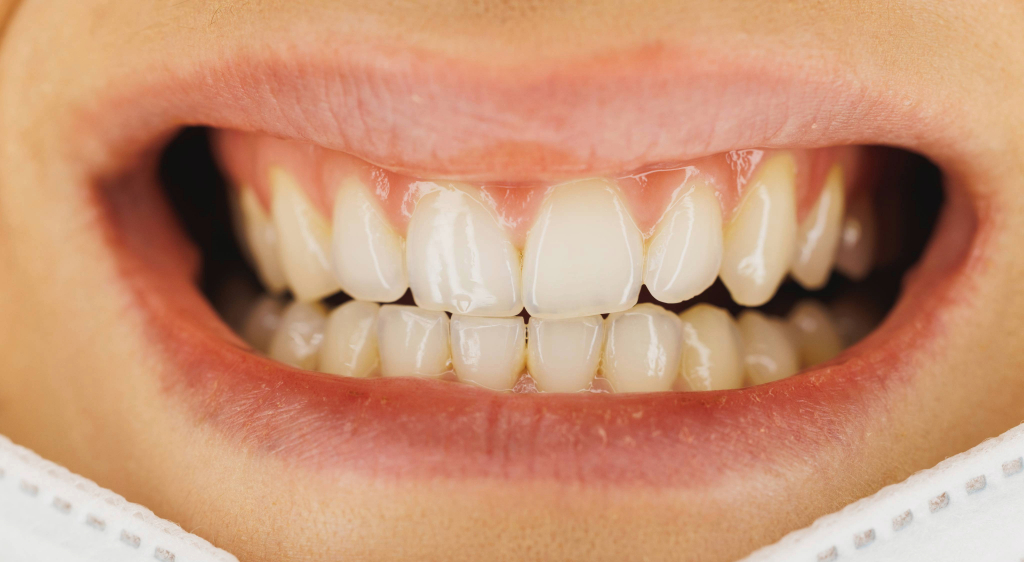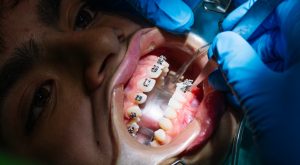Your smile is a lot more than just an expression.
it’s a vital part of your health and well-being, and while regular dental visits are important, what you do every day is what makes the biggest impact on your oral health.
The good news is that protecting your teeth doesn’t require expensive treatments or complicated routines.
If you can stick to some simple yet effective daily habits, you can maintain strong, healthy teeth and gums while preventing nasty dental problems like cavities, tartar buildup, and gum disease
In this guide, we’ll explore 10 proven ways to protect your teeth naturally, from proper brushing techniques to smart dietary choices.
Whether you’re looking to prevent cavities, maintain healthy enamel, or improve your overall oral health, these practical tips will help you build a foundation for lasting dental wellness.
1. Mastering The Art of Brushing
Many people rush through brushing or use techniques that can actually harm their teeth. The key is to brush for a full two minutes using gentle, circular motions.
Hold your brush at a 45-degree angle to your gums and pay special attention to hard-to-reach areas, especially where tartar tends to accumulate behind lower front teeth and along the gumline.
Using a high-quality sonic toothbrush can enhance your brushing effectiveness, as the rapid vibrations help break down plaque and tartar while reaching deeper below the gumline.
Remember to clean all surfaces of your teeth, outer, inner, and chewing surfaces, and don’t forget to gently brush your tongue to remove bacteria that cause bad breath.
2. Choose Your Toothpaste Strategically
Not all toothpastes are created equal. Look for products specifically formulated to combat tartar buildup and protect enamel. The most effective toothpastes contain active ingredients that can penetrate below the gumline to address plaque and tartar where they form.
When selecting a toothpaste, check for ingredients that promote enamel remineralization and offer comprehensive protection against cavity-causing bacteria.
Additionally, consider your specific oral health needs.
If you have sensitive teeth, look for desensitizing ingredients. If tartar buildup is your main concern, choose a formula designed to dissolve and prevent tartar accumulation both above and below the gumline.
3. Time Your Brushing Right
Brushing immediately after meals isn’t always the best strategy. After consuming acidic foods or beverages, your enamel temporarily softens, and immediate brushing can actually wear it away.
Wait at least 30 minutes after eating to brush your teeth. This gives your saliva time to neutralize acids and begin remineralizing your enamel naturally.
For optimal protection, brush first thing in the morning to remove overnight bacterial buildup, and again before bed to prevent food particles and bacteria from damaging your teeth while you sleep.
If you can’t brush after lunch, rinse your mouth thoroughly with water to help neutralize acids and dislodge food particles.
4. Make Water Your Best Friend
Water is a powerful yet underappreciated tool for dental health.
Drinking plenty of water throughout the day helps wash away food debris, dilute acids, and maintain healthy saliva production. Saliva is your body’s natural defense against tooth decay, containing minerals that help rebuild weakened enamel and proteins that fight harmful bacteria.
Keep a reusable water bottle with you and make a habit of sipping water after every meal or snack. If you live in an area with fluoridated water, you’re getting the added benefit of nature’s cavity fighter with every sip. This simple habit not only protects your teeth but also promotes overall health.
5. Protect Your Teeth While Eating
Smart eating habits play a crucial role in dental health. Start by being mindful of how you consume potentially damaging foods.
When enjoying acidic foods like citrus fruits or vinegar-based dressings, eat them as part of a larger meal rather than alone. This helps neutralize their acidic effects on your teeth.
For crunchy foods like hard candies or ice, resist the urge to bite down directly, these can crack or chip your enamel.
Pay attention to sticky foods like dried fruits or caramels that cling to teeth, and when possible, brush or at least rinse thoroughly after consuming them. Consider using a straw when drinking acidic beverages to minimize contact with your teeth.
6. Embrace Natural Teeth Friendly Foods
Some foods actually help protect your teeth naturally.
Crunchy vegetables like carrots and celery act as natural toothbrushes, scrubbing away plaque while stimulating saliva production.
Dairy products like cheese, yogurt, and milk provide calcium and phosphates that help remineralize tooth enamel.
Foods high in fiber help keep your gums healthy by stimulating blood flow and reducing inflammation. Green tea contains compounds that fight harmful bacteria, while nuts provide minerals essential for strong teeth.
Making these foods a regular part of your diet creates an extra layer of protection for your oral health.
7. Floss Smarter, Not Harder
While most people know they should floss, many avoid it because they find it uncomfortable or time-consuming. The key is to use proper technique rather than aggressive motions.
Gently curve the floss around each tooth in a C-shape and slide it below the gumline. Use clean sections of floss as you move between teeth to avoid spreading bacteria.
If traditional floss feels challenging, consider alternatives like water flossers or interdental brushes. The best flossing tool is the one you’ll actually use consistently. Make it part of your bedtime routine to ensure you never skip this crucial step in protecting your teeth and gums.
8. Address Grinding & Clenching
Many people unknowingly damage their teeth through nighttime grinding (bruxism) or daytime clenching. These habits can wear down enamel, cause sensitivity, and even lead to cracked teeth.
Pay attention to morning jaw pain or headaches, which could indicate nighttime grinding.
If you notice these signs, consult your dentist about getting a custom night guard.
During the day, practice stress-reduction techniques and be mindful of clenching when concentrating or exercising. Setting regular reminders to relax your jaw can help break this harmful habit.
9. Create a Complete Oral Care Routine
Build a comprehensive daily routine that includes all aspects of oral care. Beyond brushing and flossing, consider incorporating an alcohol-free antimicrobial mouthwash to reach areas your brush and floss might miss.
Use a tongue scraper to remove bacteria that cause bad breath and affect overall oral health.
Establish a specific order for your oral care steps, for example,
Floss first to loosen debris, brush thoroughly, and then finish with mouthwash. Having a consistent routine ensures you don’t skip important steps and helps make good oral hygiene second nature.
10. Monitor & Respond to Changes
Pay attention to your mouth’s signals. Early signs of problems might include increased sensitivity, bleeding gums, or new spots on your teeth. Don’t wait for your regular checkup if you notice changes.
Addressing issues early prevents more serious problems later.
Keep track of areas that tend to accumulate tartar or feel sensitive, and give them extra attention during your daily care routine. Regular self-examination can help you spot potential issues before they become major problems, saving both your teeth and your wallet in the long run.
Your Path to Lasting Dental Health
Protecting your teeth is a daily commitment, but the rewards of a healthy, confident smile make it well worth the effort.
By incorporating these ten habits into your daily routine, you’re taking proactive steps to prevent common dental problems and maintain strong, healthy teeth for life. Remember, consistency is key; it’s better to maintain good habits daily than to attempt periodic intensive care.
Dealing With Tartar Buildup?
For those specifically dealing with tartar buildup or looking for enhanced protection against plaque, TartarEnd® offers a scientifically advanced solution. This specialized toothpaste is specifically formulated to dissolve and remove tartar both above and below the gumline.
When used with a sonic toothbrush as part of your daily routine, TartarEnd® can help reduce gum pocket depths and stop bleeding gums in as little as two weeks!






